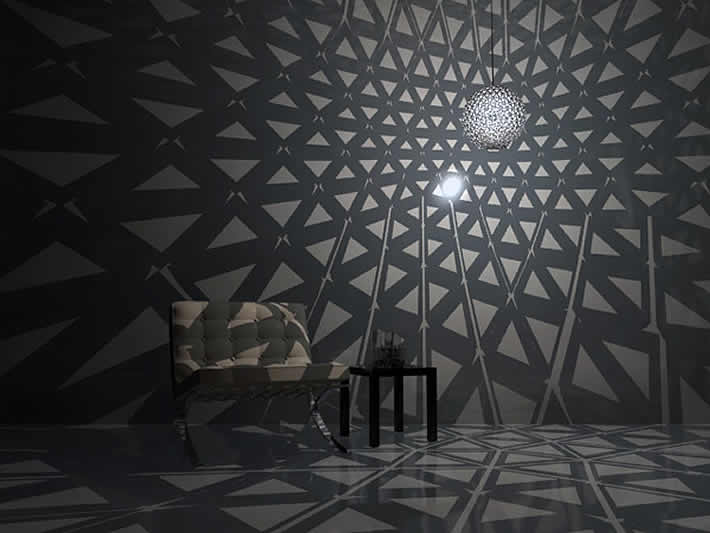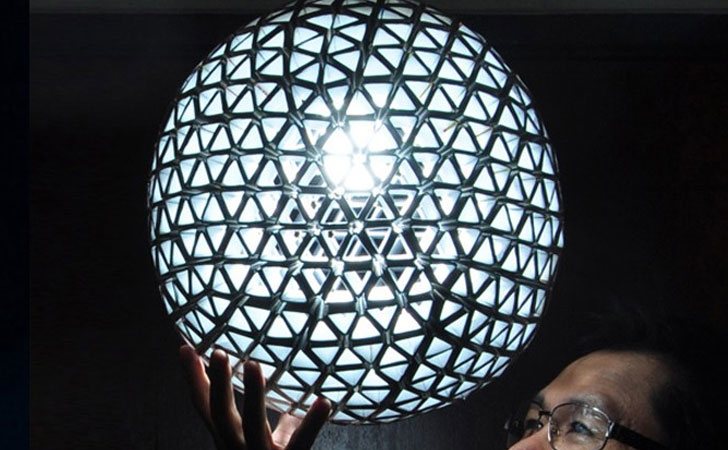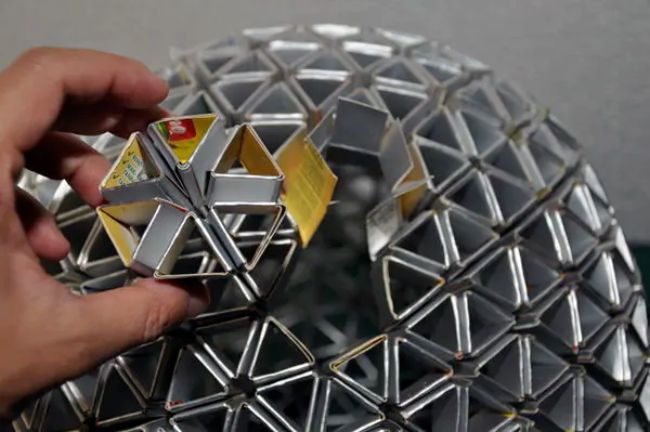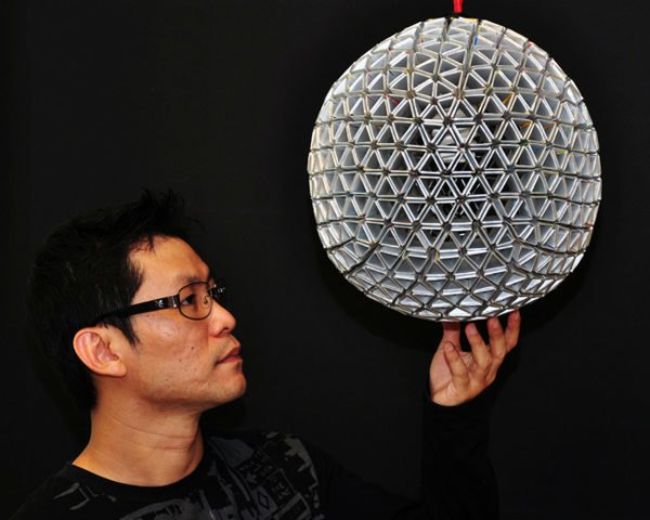DIY Geodesic Disco-Ball Lamp from Tetra Paks

Favorite beverages are a guilty pleasure some of us indulge in despite the ecological impact. This hanging light fixture may be the solution for all that repetitive waste, taking scrap modules and turns them slowly into something new and quite crafty.

Tetra Pak drink boxes form the basis for this origamic, disco-ball-shaped homage by Ed Chew to Buckminster Fuller and his work on geodesic domes and other super-stable geometric structures.

With rhythmic simplicity, a series of used boxes can be folded and converted into pentagonal and hexagonal pieces that slot together forming permeable spheres (or cylinders or other shapes).

The resulting configurations work toward dispersing light from a central hanging, standing or wall-mounted source, while providing mutual stability without the need for adhesives or fasteners. Eat your heart out, Epcot Center.
Chew expanded on this idea in a really cool way with “The Core,” making use of upcycled coconuts. Check it out:
“There are two main materials used for this project, namely packet drinks and coconut shells – materials that are often discarded after their intended use are served. These materials form the core and the crust of this artwork.”

“This project is not an attempt to provide a solution to the prevalent environmental issues in today’s society; it is merely an artwork created to raise public awareness about upcycling and also to demonstrate the benefits of reusing items that would normally be discarded to landfills into unique and aesthetically pleasing artworks. This is only a small effort to get the message across to the masses that instead of simply buying something new, promote reuse whenever possible.”
“The intention of this project has twofold: to produce an upcycled product design while at the same time, to create a piece of artwork, hence blurring the boundary between art and design – functional on one side and sculptural on the other. I hope that people can look at this project and see it as an extension of my thoughts thus establishing some kind of connection between my work and the observer.”




